Vessel Traffic
Common vessel traffic in the Waters off Port of Gothenburg.
The Trubaduren Area
Upon arrival to the entrance of the fairways to Gothenburg the area around Trubaduren lighthouse should be considered as a junction area where ships may come in conflict with each other. There are four different pilot boarding positions which cause vessels to make unpredictable turns to provide good lee when pilots embark/disembark. There are also three different anchorage areas where vessels come and go with short notice and for this reason change their speed.
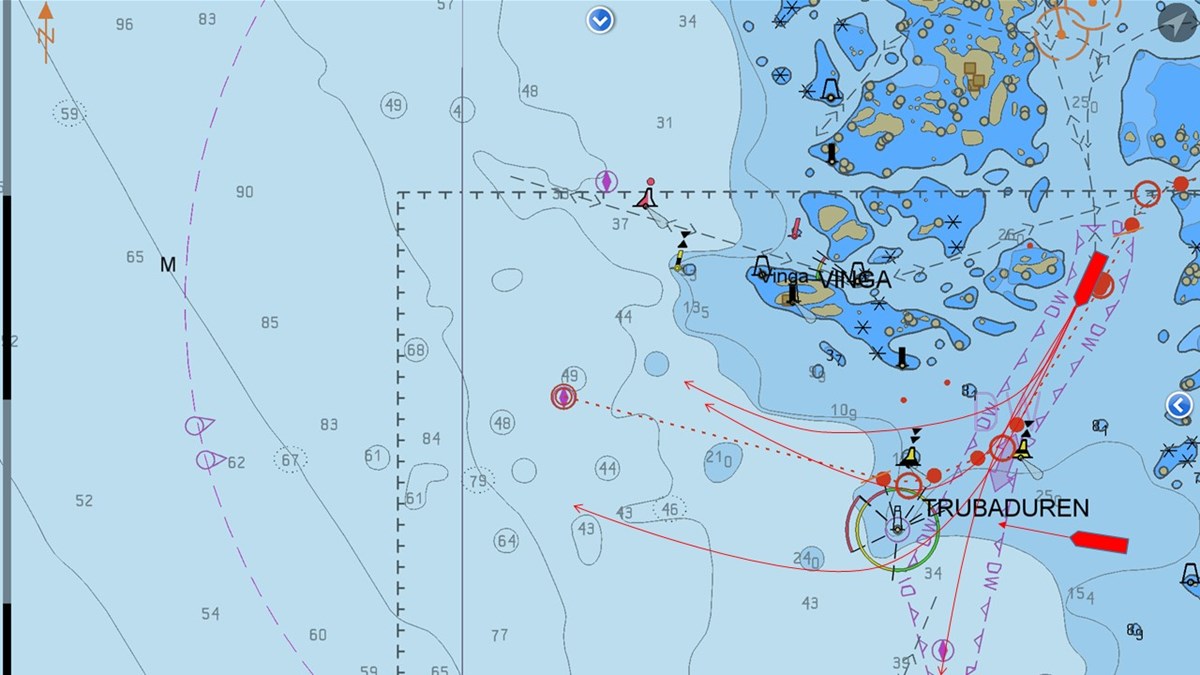
Outbound Traffic
Vessels with small draft and ferries could turn west when passing light buoy Ekeskärsbådan and then pass either north or south of Gamla Gumman light buoy. Midsized vessels could have a nice passage between Trubaduren lighthouse and Gamla Gumman south cardinal buoy. Larger vessels and deep draught vessels normally turn west when passing south of Trubaduren. Southbound traffic most probably pass east of Trubaduren.
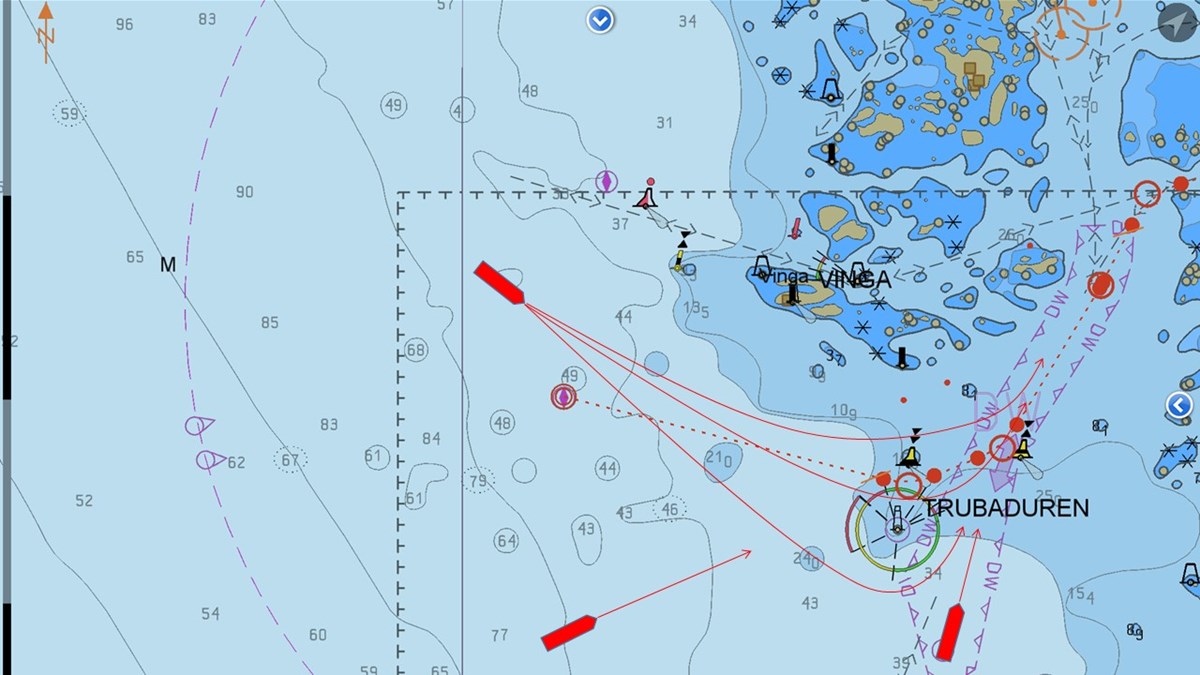
Inbound Traffic
If traffic situation allows, smaller and midsized vessels as well as ferries and Ro/Ro vessels like to come in north of Gamla Gumman. If there are vessels which interfere with such a choice they have to pass more south and then pass just north or south of Trubaduren. Larger vessels and deep draught vessels normally pass south of Trubaduren.
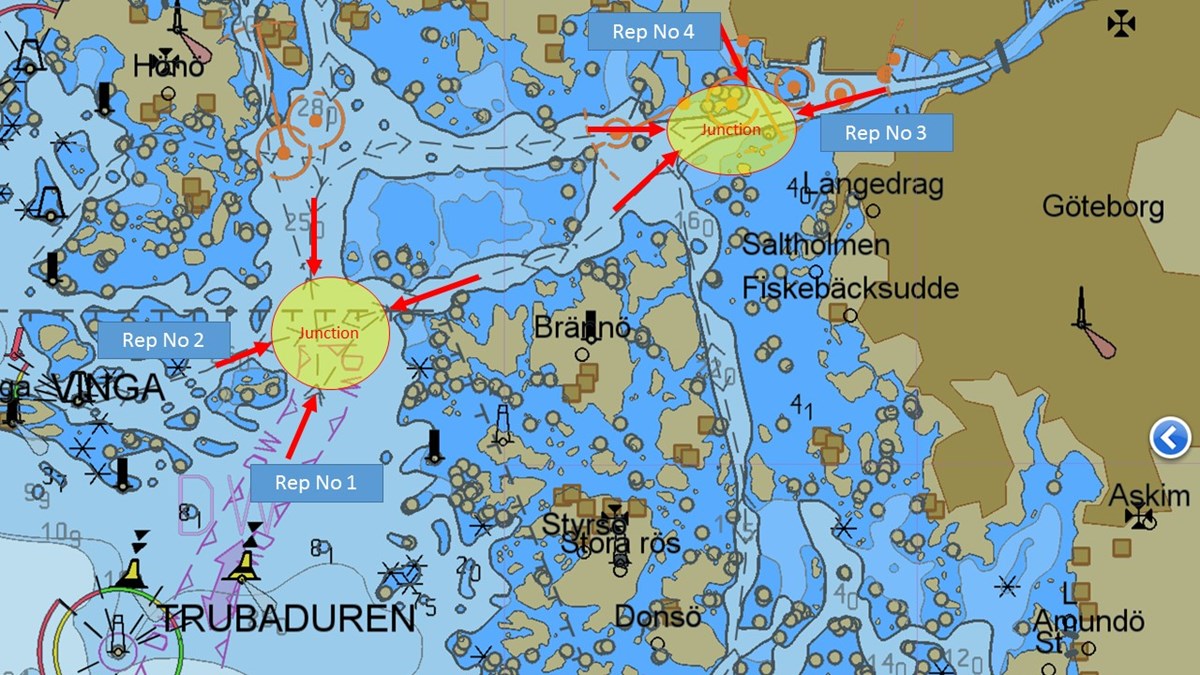
Traffic in the fairways
There are reporting points both for incoming and outgoing traffic. Depending on weather situation and traffic flow one could choose either South- or North Channel. Vessels are advised to plan the passage in order to minimise traffic interference in the junction areas illustrated below.
South Channel
The South Channel transit is shorter than via the North Channel. There are both water and space enough for larger vessels if the channel is free from meeting traffic. Maximum allowed draft is 13 m, but vessels with draft more than 10m are advised to use the North Channel. The turn radius of the bends are about 0.75 NM.
North Channel
The North Channel is mainly used by large vessels but, if not blocked, open for all traffic. The North Channel is wider and turning radius is 1.0 NM. Maximum draft is 18.9m and minimum width is approximately 275m. When a large vessel is inbound through South Channel it is recommended for outgoing vessels to use North Channel, if this fairway is free from large vessels. In bad visibility such separated traffic flow is to prefer.
Leisure Crafts
During the summer there are numerous leisure crafts in the fairways. Small craft fairways are arranged. Keep sharp lookout and give signal towards leisure crafts that not keep clear. See Swedish NtM 12205 and 12147.
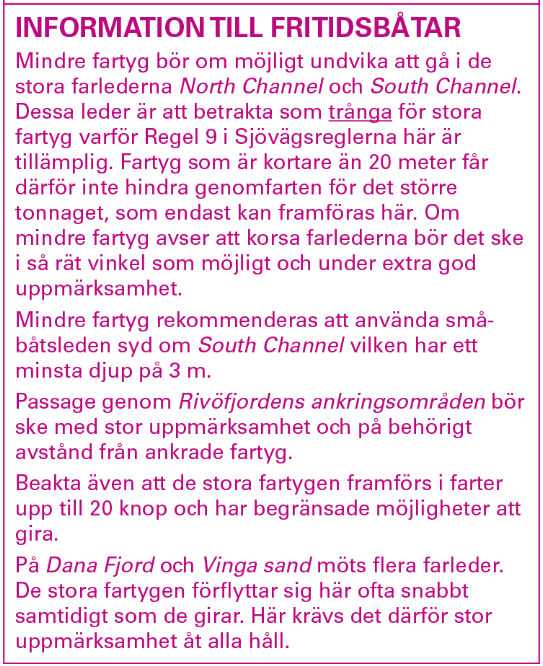
Transit speed
If weather and traffic allows pilots normally speed up to around 15-18 knots in the outer area depending of vessels characteristics. When entering the S or N Channel we normally reduce to around 12-14 knots with larger ships. For vessels which are exposed to heeling restrictions lower speed could be necessary in the turns.
Speed restrictions
There are no speed limits until the island Älvsborg from where eight knots restriction applies. But if for example bunkering operations are in progress on Rivö fjord or Dana fjord reduced speed are required. The same situation appears when passing vessels alongside crude oil terminal Tors Harbour in North Channel and pilots normally recommend a speed of 8-10 knots depending on ship size.
Overtaking
When overtaking other vessels the navigator should have in mind that risky situations could develop. The vessel which is to be overtaken must in advance be contacted on VHF Ch 13 and approve the operation. The overtaking operation should not be carried out if there is meeting traffic in the area. The overtaking phase should be carried out as quickly as possible.
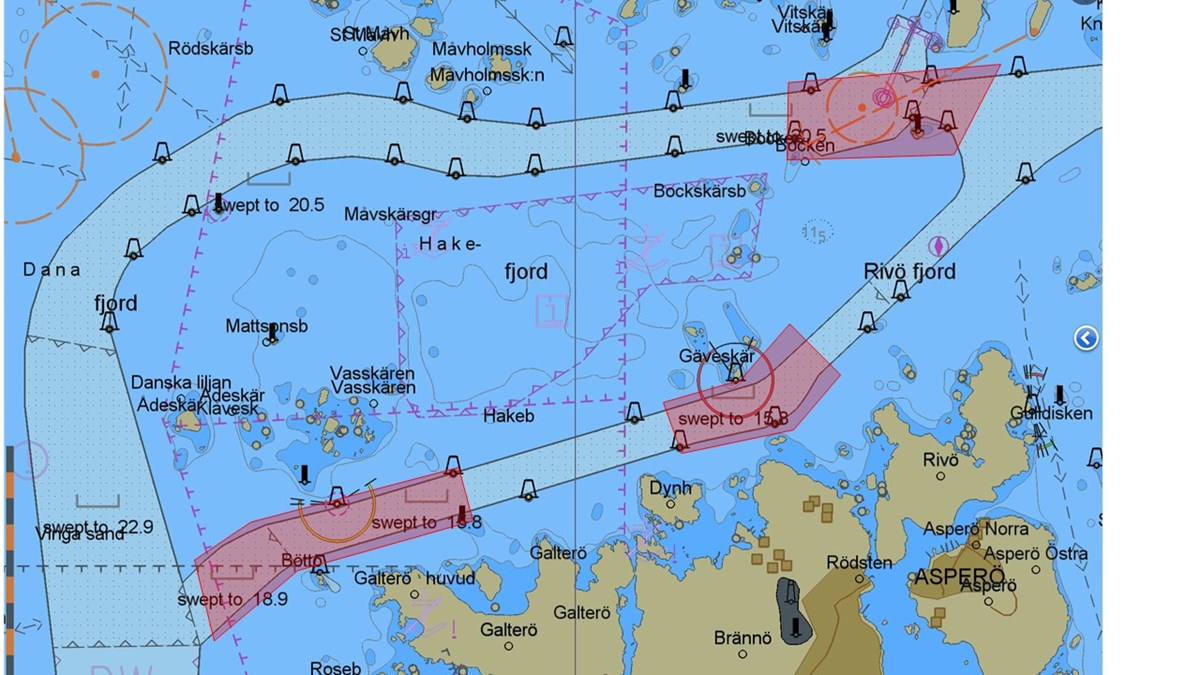
Meetings in the fairways and in the port
When meeting other vessels the normal procedure is “port to port”, but in some occasions it could be more efficient to agree on a meeting “starboard to starboard”. Make sure that such an agreement not interferes with other traffic ahead or behind you. Avoid meeting vessels in the bends of Böttö, Måvholmen, Gäveskär and the passage Dynan – Tors Harbour. All vessels should keep a nice track on their side of the fairways but not too close to the fairway beacons always considering weather- and traffic conditions.
Download: Recommended routes in Gothenburg
Communication
VTS and pilots in Gothenburg appreciate if all navigators communicate well and spread their intentions on VHF channel 13. All communication should be carried out in English.
Geographical names
VTS and Pilots use name of for example islands, light buoy or other major names in order to plan meetings with other vessels. Read more
Contingency plan and emergency anchorage
When entering Gothenburg after passing Trubaduren lighthouse there is quite good margins east of the fairway. Be aware of that light buoy Sänkberget cover a shoal of eleven meter and the stick “Värngrund” further NE marks a spot of eight meter. Using the part west of the fairway should be avoided. “Point of no return” is located just at the entrance to the North Channel at Dana fjord. For entry through South Channel, Rivö fjord could be used for turning or anchorage. Another possibility to escape could be to enter North Channel in the northern part of Rivö fjord. Anchor could be used anywhere in emergency but not were cables are marked.
In the port area
East of the island Älvsborg there is a turning area of more than 500m. The normal procedure with container vessels is to turn starboard over and go backwards with starboard side alongside. All vessels in the container terminal are moored with starboard side due to port logistics. Container and cruise vessels bound for quays in north-south direction in the western part of the container terminal normally moor starboard side alongside. Vessels bound for Älvsborg harbour are turned and moved backwards to fit in ramp locations. Outside Skarviks harbour there are turning spots with a diameter of 350m. Most tankers are turned starboard over and are brought by stern first to their different berths. In this area a lot of smaller vessels from the river embark/disembark pilots.
Last updated 2021-01-31